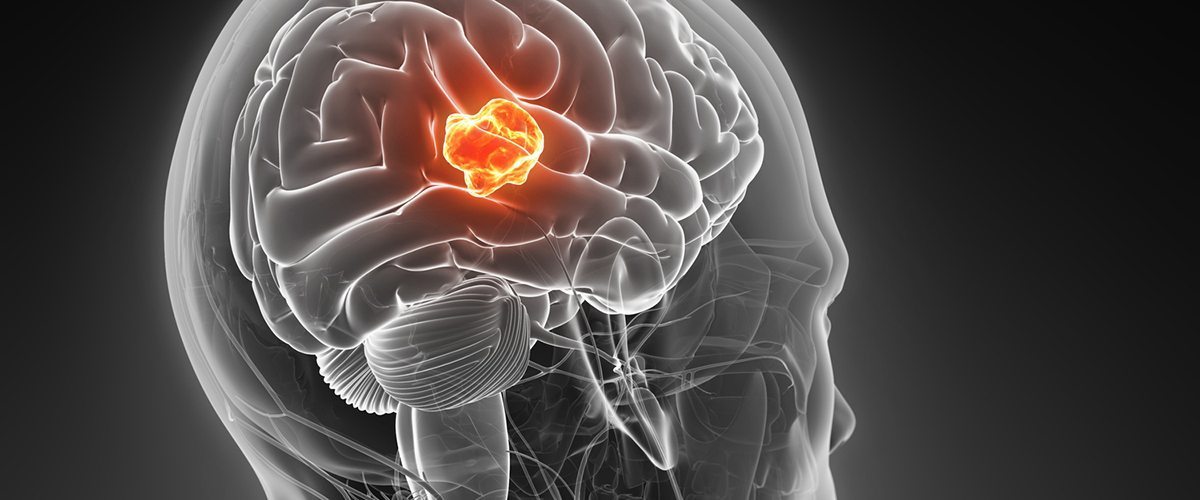Understanding Glioblastoma
Neuro-oncologist Howard A. Fine on what to know about the type of brain cancer the late Sen. John McCain battled.


United States Sen. John McCain passed away at 81 after discontinuing treatments for brain cancer. He was diagnosed in July 2017 with glioblastoma, the most common type of malignant brain tumor, and had been in treatment for a year.
“Glioblastoma is what we call a primary brain tumor, meaning it starts out in the brain,” says Dr. Howard A. Fine, chief of the Division of Neuro-Oncology in the Department of Neurology at NewYork-Presbyterian/Weill Cornell Medical Center, and the founding director of the Brain Tumor Center and associate director for translational research at the Sandra and Edward Meyer Cancer Center at Weill Cornell Medicine. “The most common primary malignant brain tumors in adults are called gliomas, of which the very most common and malignant of those are glioblastoma.”
Glioblastoma can affect children or people in their 90s, but it’s most prevalent from ages 40 to 60.
“There are only 14,000 to 17,000 cases per year,” says Dr. Fine, “but because it’s a disease that is very often fatal, glioblastomas exert a significant toll on a relatively young and productive population of patients and their families.”
Here, Dr. Fine talks about glioblastoma symptoms, treatment options for those with the disease, and what people diagnosed with it can expect.
How is glioblastoma diagnosed?
Patients usually have some kind of neurological symptom like a headache, seizure, new weakness, confusion or vision problems. A doctor will order some type of scan, most commonly an MRI.
What causes glioblastoma?
We’ve looked for many associations, but the bottom line is, we don’t know what causes these tumors. There is no clear association. The only real risk factor we know of is, if you’ve had a history of cranial radiation, then you have a slightly increased risk. For the vast majority of patients who have glioblastoma, they don’t have that history of radiation. We don’t know what causes them, and they don’t run in families like prostate or breast cancer.
What is the typical prognosis for glioblastoma?
How you approach it with patients and what the real numbers are, are not exactly the same thing. That’s the art of medicine. The data are that the median survival for glioblastoma today is approximately 15 months. Median is a statistical number that means half of the patients do worse than that, and half do better. Do I have patients who are three years, five years, 10 years out from glioblastoma and are doing well? I do, but that’s not everyone. You have to have hope, but you also have to understand the realities for the majority of patients.
There are certain characteristics, which we call prognostic signs, that suggest who is more likely to do better than the median and who’s more likely to do worse. One of the strongest prognostic signs for this disease is age. The older you are, the much more aggressive the disease. What can be in a patient’s favor is being otherwise in good health. It’s also a positive sign, when you can have a complete gross resection, meaning they took out all the tumor they could see. Those are positive prognostics.

Dr. Howard A. Fine
How is glioblastoma treated?
The standard treatment starts with surgery to remove as much of the tumor as you safely can. Then patients receive radiation and chemotherapy, which is the most important part of treatment. Generally, after surgery we wait three to four weeks before starting radiation. You want the wound from the craniotomy to heal. People actually tolerate brain surgery better than they tolerate general run-of-the-mill abdominal surgery. The major side effect from standard chest or abdominal surgery is pain, but ironically the brain doesn’t have pain fibers. We get patients up and walking around 12 to 24 hours after surgery for big brain tumors, and they’re walking out of the hospital in two to four days.
What are the next steps for patients with glioblastoma? And how has treatment changed?
Typically, the next step would be six weeks of radiation along with a well-tolerated chemotherapy drug called temozolomide. For my patients, I’d recommend having genomic sequencing done on the tumor. Then we’d look for mutations and for specific drugs that target those mutations. These are things that would be done in the setting of a clinical trial. Also, if there is a drug that has been approved by the Food and Drug Administration for another cancer but would target that patient’s particular pathway, we have the ability of potentially offering that drug to that patient. The bottom line is, we try to understand the biology of each patient’s tumor to see if we can make a choice more rationally about treatment than we have been able to in the past. There are also a number of investigational approaches offered in the setting of clinical trials that could be combined with standard therapy or used at a later time should the tumor recur after standard treatment.
What are some experimental glioblastoma treatments being developed and studied?
There have been marginal advances, at best. The general categories of experimental therapies being done are in immunotherapy, including vaccines, gene, and viral therapies, in which a virus that has been genetically altered to attack cancer cells is injected into a patient, and precision medicine-based approaches in which doctors use the genetic profile of an individual’s tumor to choose the best treatment. Although all these novel strategies are unproven, they offer hope for better outcomes in the future for patients with glioblastoma.

